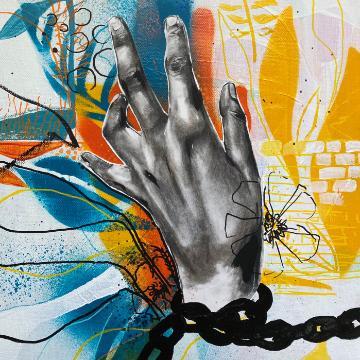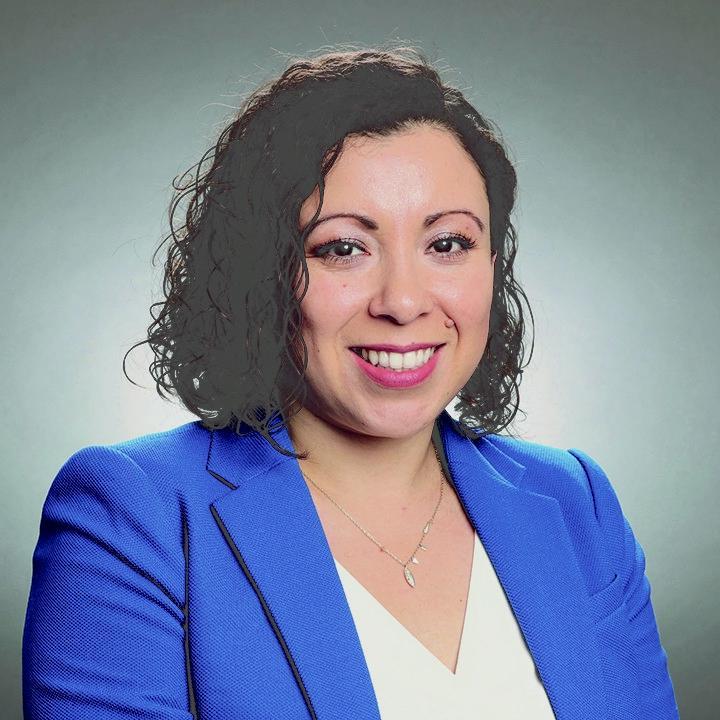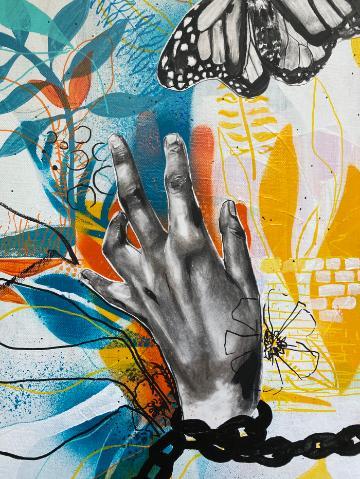
Remembrances of Transformation, (de)Humanization, and White Supremacy

By Claudia Rodriguez-Mojica
Assistant Professor, Department of Education
Santa Clara University
A Jesuit education aims to transform students, prepare them to do work that promotes the common good, and help them thrive as human beings. It aims to build a more humane, just, and sustainable world. This vision is what led me to accept a faculty position at my Jesuit university. As a Chicana professor rooted in my ancestors’ ways of knowing and being, I value community and reciprocity over individualism and competitiveness. I acknowledge, value, and honor the experiential knowledge of marginalized peoples and I carry these values into my teaching and scholarship. In many ways, my values and the Jesuit values of service and work for the common good and a more just world are aligned. As a faculty member at a Jesuit university, I have been able to ground my research and teaching in critical theories, name acts of racism, white supremacy and oppression—and I have challenged my students and colleagues to not only reflect on their roles as oppressors but also to take action to remedy their missteps and work toward anti-racist education. I have been able to conduct critical race-conscious work at my Jesuit institution and have received financial support and encouragement to continue my work. I am grateful that I have been able to pursue my work in a way that is aligned with my own personal values. Still, I struggled when I sat to write this piece—a piece that would engage the intersection of my work with the Jesuit educational mission, and push the mission forward.
After months of reflection, study, and conversations with my sister-scholars of color Maritza Lozano and Katherine C. Rodela, I realized that the source of my struggle with writing this essay centered on two remembrances: (1) the framework of transformation communicated through Jesuit education scholarship is largely made by and intended for use by the Western white middle and upper class and does not reflect the needs of historically and actually oppressed communities in the United States and within Jesuit institutions of higher education and (2) humanity is not seen in all of us, even within Jesuit education; this fuels white supremacy. How, I ask, can Jesuit education build a more humane and just world if humanity is not seen in all of us? If the pervasiveness of white supremacy is not named, and white Jesuits, faculty, and staff at Jesuit institutions fail to recognize and examine the ways in which the normativity and reinforcement of whiteness—supported by institutional power—paves the way for the enactment of racism, how are we to build a more just and humane world?
Nearly 40 years ago, Ignacio Ellacuría, S.J. explained that universities must be concerned with the social reality because they must enlighten and transform the social reality of which they are a part. He called on universities to transform the social reality by ensuring that liberty, justice, and love prevailed over oppression, injustice, and hate. The social reality in the United States today is that of racism and white supremacy and, I argue, it is fueled by the failure of people to see the humanity in others. How are we to answer Ellacuría’s call if we refuse to address how white supremacy is killing our Black brothers and sisters? And, why do we so easily rally to address poverty and oppression outside the U.S., but fail to do the same to address the weaponization of whiteness and murders by white supremacy within this country?
I take this opportunity to push the Jesuit mission forward by calling attention to ways the Jesuit framework of education for the whole person and personal transformation does not reflect the needs of historically and actually oppressed communities within Jesuit institutions of higher education. This lack of reflection normalizes whiteness and “others” oppressed communities on Jesuit campus grounds. Next, I discuss how failure to see the humanity in others reaches into our classrooms, and how dehumanization makes possible acts of violence and murder by white supremacy. In this way, I problematize the need for those of us at the margins to share our stories of unspeakable hardship in order for our humanity to be seen. Finally, I return to values rooted in community and Indigenous ways of knowing.

An Ill-Fitting Framework for the Oppressed in Jesuit Education
In a conference on the commitment to justice in American Jesuit higher education held at Santa Clara University, Peter-Hans Kolvenbach, S.J. said, “The real measure of our Jesuit universities lies in who our students become. For 450 years, Jesuit education has sought to educate ‘the whole person’ intellectually and professionally, psychologically, morally, and spiritually.” To be whole, Kolvenbach argued, students must have a well-educated solidarity learned through direct experience or “contact.” Kolvenbach continued, “Students in the course of their formation, must let the gritty reality of this world into their lives, so they can learn to feel it, think about it critically, respond to its suffering and engage it constructively. They should learn to perceive, think, judge, choose, and act for the rights of others, especially the disadvantaged and the oppressed.” Through his words Kolvenbach makes clear who he has in mind when he thinks of students in institutions of Jesuit education— students who have the option to let the gritty reality of our world into their lives. Students who spend a semester or spring break immersing themselves in “the gritty reality” of the disadvantaged and oppressed as a way to achieve the direct experience and contact necessary for solidarity.
To be clear, I do not take issue with Kolvenbach’s recommendations that Jesuit education strive to educate students who will stand in solidarity with the disadvantaged and take action against oppression and injustice. My issue is this: Kolvenbach’s words make invisible the presence of students from disadvantaged and oppressed communities in Jesuit institutions of higher education. Kolvenbach says that students must let the gritty reality of this world into their lives— letting the gritty reality in assumes that students have a choice in whether or not to see the gritty reality, as if all students stand in front of a metaphorical door, considering whether or not to let the gritty reality in. I can see how this scenario may be accurate for many white students and students from middle- and upper-class backgrounds—they can decide whether or not to immerse themselves in the gritty reality. Stating that students should think and act for the rights of others, especially the disadvantaged and the oppressed, assumes that students in Jesuit education are not the disadvantaged and the oppressed themselves. Kolvenbach’s words highlight that “students”
means students from majoritarian privileged communities. Kolvenbach, unintentionally I am sure, “others” students who belong to communities outside the normative white middle and upper class.
Kolvenbach’s focus on students who have the choice to immerse themselves in the gritty reality is understandable because, as Dean Brackley, S.J. stated in a 2005 lecture, “Most of us in university communities are middle class.” Making clear that he is discussing Jesuit education through the majority middle-class lens, Brackley discusses blind spots and biases that require personal transformation that will expand students’ horizons, shift their worldview, and lead them to question what they once thought they knew. Brackley called this cognitive liberation. Brackley presents semester abroad programs as an illustrative example of students’ cognitive liberation. He says:
"To their surprise, once in El Salvador they spend much of their time wondering why these poor people are smiling and why they insist on sharing tortillas with strangers like them. However, if they listen to the stories of unspeakable hardship, the people will break their hearts. That will turn out to be the most important thing that happens on their trip. It can be a life-changing experience, if the visitors let it happen.
The humanity of the poor crashes through their defenses. As they see their reflection in the eyes of the poor (“They’re just like us!”), they begin to feel disoriented. Their world—half-consciously divided into important people like themselves and unimportant people like their hosts—begins to shake."
There are different variations of Brackley’s statement above, but at their core the narratives remain the same: Immersion trips “work” when the humanity of the poor crash through visitor defenses and students are transformed by letting the gritty reality of the world in. I agree that it is crucial students (and faculty and staff) come to see the humanity in the oppressed. Frameworks that assume white middle- and upper-class perspectives and needs, however, are inadequate to discuss the personal transformation of students from minority and oppressed communities. Frameworks that center white middle- and upper-class students and require the poor and otherwise marginalized to make (hyper)visible their humanity in order for students
to achieve personal transformation are troubling. They normalize whiteness, normalize the failure to see the humanity in marginalized peoples, and use the marginalized as tools for personal transformation. Below, I discuss how failure to see the humanity in others reaches into our classrooms and how dehumanization makes possible acts of violence and murder by white supremacy.
Dehumanization in Our Classrooms
Imagine you are sitting in a faculty meeting. A white female colleague comments that students of color shut down and put their heads down when issues of race and racism come up in class. She goes on to say that students of color need to be able to have courageous conversations because not sharing in class was taking learning opportunities away from their classmates. By not providing classmates with an opportunity to learn in class, she explains, students of color who do not engage in conversations of race and racism are in direct violation of the department’s student handbook.
On the surface, these comments may be interpreted by some as the sincere desire to make a class a safe space where all students can openly share their lived experiences. Looking below the surface, however, it is clear that the comments are highly problematic. The comments imply that instructors and classmates have a right to learn from the often painful and fraught lived experiences of students of color. Such a belief suggests ownership of students of color; of what they say and do not say, and what their bodies do and do not do. If white women shut down and put their heads down when the class discussion turned to sexual harassment and assault, would the instructor have demanded that women learn to have courageous conversations about their experiences? Would the instructor have said that they were taking learning opportunities away from others in class and were in violation of the student handbook? Likely not.
When students of color reacted by putting their heads down and disengaging in conversations about race and racism, the instructor situated the problem on students of color. Students of color were the problem because they did not engage and did not know how to talk about their experiences with racism. The instructor could have used the experience to reflect on what about the conversation, the class, or the instructor herself may have contributed to the students’ silence. Thinking about the silence and body language humans employ when we feel unsafe or triggered, or when we make a deep personal connection to a topic, could have led to a response that saw the humanity of students of color within the classroom space. Sadly, this illustrative example of dehumanization in a university classroom was taken from an actual event in a faculty meeting at a Jesuit institution.
Dehumanization in Society Today
The example described above is small in comparison to the battles communities of color face to survive today. The normalization of whiteness and dehumanization makes possible acts of violence and murder by white supremacy. Among us are Black faculty, staff, and students who are fighting for their lives because white supremacy is enacting racism through the hands of police officers and 911 calls from white women. Black people are being killed today and their lives threatened; they are dehumanized to the point that society expresses more concern over a dog being mistreated than a white woman lying about being threatened in order to summon the police as a threat to a Black man’s life. Latinx children are still being held in cages in America. There continues to be violence and mistreatment of Asian communities in America during COVID-19. We have Black, Latinx, and Asian people in Jesuit education who do not need to open their eyes to the gritty reality of the world, have their world shaken, or have the humanity of the oppressed crash through their defenses. Calls to see the humanity in the oppressed while ignoring that we walk among you is a reminder that aside from recruiting us, Jesuit education has made no changes to a pervasive culture of whiteness.
In his 2017 dissertation titled A God Worth Worshipping: Toward a Critical Race Theology, Duane T. Loynes Sr. argues that even with admirable progress toward racial justice, “Christian theology still operates from the normativity of whiteness” (p. 4). Loynes’s work is motivated by what he describes as:
“…the high stakes involved in failing to attend to the ways in which cowardly silence permeates our theology. First, because theologians fail to name the pervasive ways in which White supremacy has shaped and sustained the Christian theological tradition, they are unaware of and unable to halt the theological perpetuation of a racially hierarchicalized culture. Secondly, because they are inattentive to the problem, they do not (indeed, cannot) engage in the liberating project of systemically reimagining theology in a manner that includes those who were formerly marginalized.”(p. 4–5)
Silence and inattentiveness to white supremacy in Jesuit education stands in the way of a more humane, just, and sustainable world. We must face and transform the normalization and reinforcement of whiteness in Jesuit education that makes possible anti-Blackness in our society and within our institutional walls.
To students from historically and actually oppressed communities in Jesuit institutions, remember that you are already whole. As healer Abuela Ana Tlahuicoatl beautifully said, “We were born with all that we need to be well” (2020). Remember, we started whole and full. We did not start broken. Little by little, however, colonization and white supremacy can chip away at what makes us whole. We may learn to shun our home language(s), look and sound “professional or academic” (usually code for white middle and upper class), and hide the parts of us that do not fit normative whiteness. Abuela Ana Tlahuicoatl reminds us that we can internalize capitalist values rooted in ideas of deficit and competitiveness and begin to believe that if others have something it means we will have less. Would seeing the humanity in others mean you are somehow giving up pieces of your own humanity? If Black lives were to matter, would your life matter less?
As you begin your journey of remembrance, transformation may feel like a coming home. It may be remembering the humanity in all living beings and the ways our communities practice reciprocity, solidarity, and love as sustenance. It may be returning to the indigenous spirituality and healing you were taught to push away, and once again valuing the wisdom and experience of our elders and ancestors. Allow your values to sustain your decisions, and as you ascend formal higher education, carry with you these remembrances.
CLAUDIA RODRIGUEZ-MOJICA, Ph.D., is an assistant professor in the Department of Education at Santa Clara University. She currently serves as the bilingual authorization coordinator at Santa Clara and is a former dual language classroom teacher. Her research focuses on the classroom instruction of bilingual children in public schools and the intersections among language, race, ethnicity, gender, and culture as they relate to the teaching and learning of Latinx bilingual learners. Rodriguez-Mojica’s work has been published in International Multilingual Research Journal, Language and Education, Educational Administration Quarterly, Teacher Education Quarterly and The Urban Review.